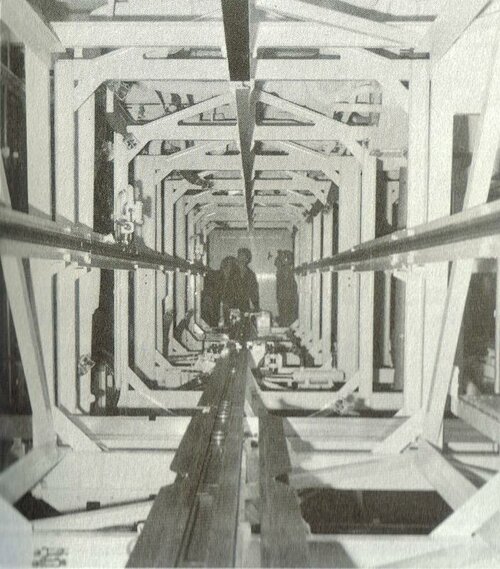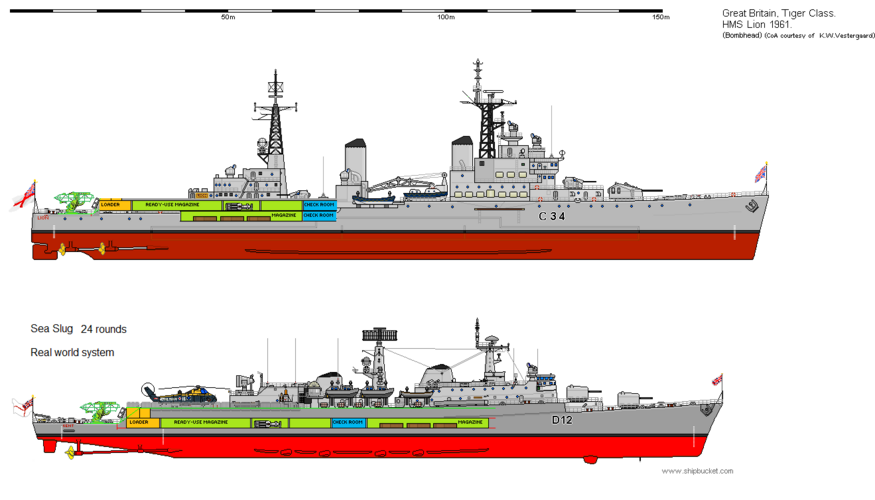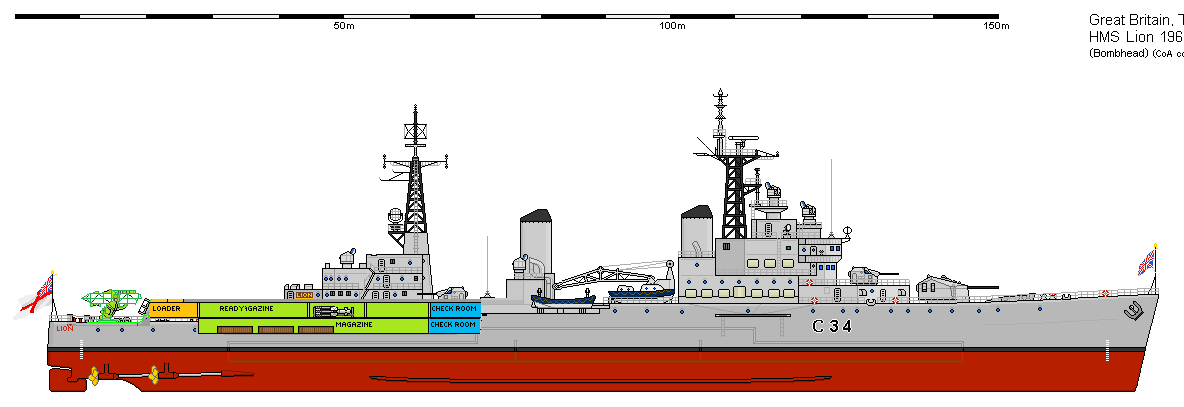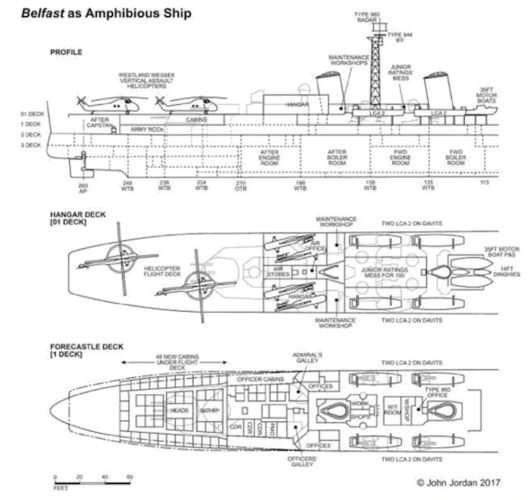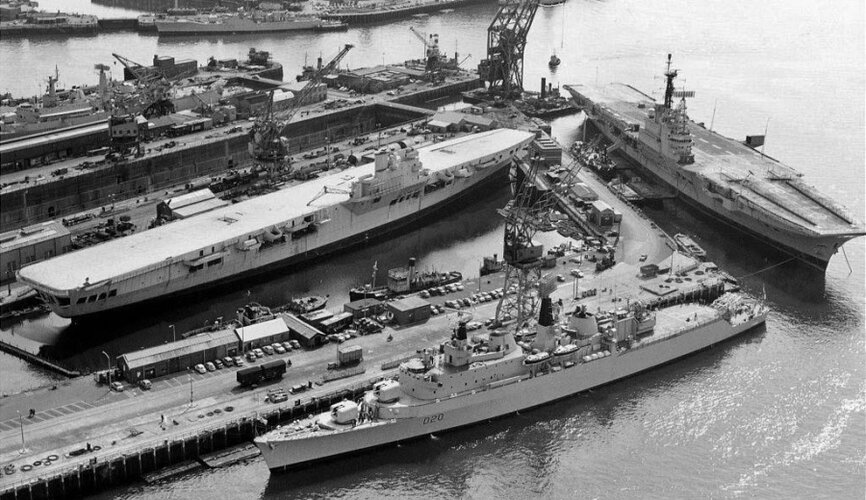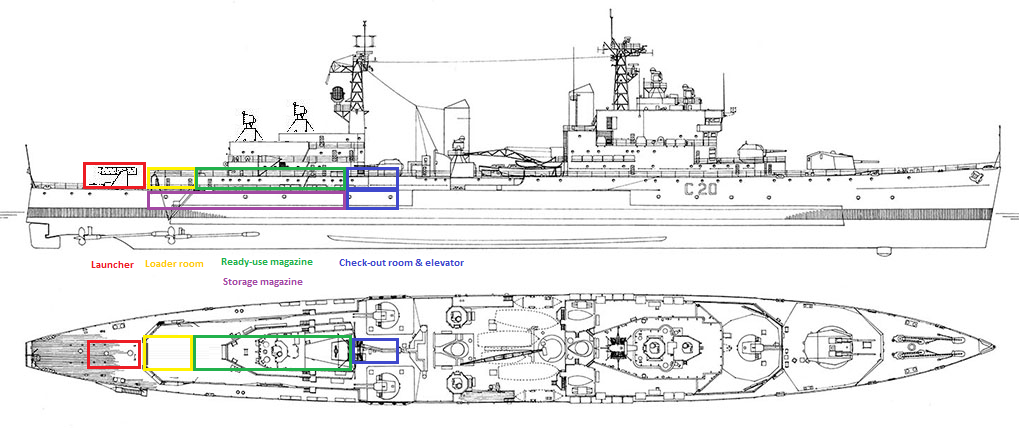I am sure that either in Grove (Vanguard to Trident) or Wettern (Decline of British Seapower) there is a referemce to commandos rather than ASW for the Tigers.
Early artists impressions (I posted one a while back) showed a smaller shed than the hangar actually fitted and only two Wessex.
Tucked away in a footnote in Conrad Waters recent book "British Fiji Class Cruisers and their derivatives" (I haven't read that far yet) is the following:-
"Some weight was also attached to the possibility of utilising the converted ships for emergency troop transportation and lift, reflecting a similar, previous helicopter conversion proposal for the cruiser Belfast. However, the importance attached to this secondary role seems to have declined by the time the adjustments to operate Sea King helicopters were made. Significantly, no specific provision for troop accommodation was made in the converted design."
The author, having delved into the Ships Cover, noted 3 options for them in Sept 1963.
Scheme X - flight deck for 1 Wessex rotors spread. Hangar stowage for 3. Removal of Y turret. Time 9 months, cost £1.25m.
Scheme Y - flight deck for 2 Wessex rotors spread (but landing one at a time). Hangar space for 4 Wessex. Maintenance facilities to destroyer standards. Accomodation for FAA personnel.48xMk48 torpedoes. Removal of Y, Q2 & Q3 turrets. Time 12 months, cost £1.5m
Scheme Z - flight deck space for 2 Wessex rotors spread. Space to land both at the same time. Hangar space for 4 Wessex. Maintenance facilities to destroyer standards, accomodation & TT as in Y. Removal of Y turret (and maybe some of thec3" guns depending on topweight considerations). Time 15 months, cost £1.5m revised to £2.0m in Oct.
Z was chosen for development in 1964. The major change subsequently was to place the hangar at the forward end of the flight deck so eliminating the need for a lift and its associated weight. (So original plan mjust have been for hangar under the flight deck). Conversion cost then estimated at £2m plus £2m to refit the ships to serve into the 1970s.
Notably no mention of troop accommodation in any of these, and if the hangar was to be under the flight deck, just where is the space to be found for them? As rebuilt the space under the flight deck became cabins and messes.
The author also reproduces a 1964 graphic in which the hangar appears shorter than the final design. That was by virtue of the Wessex being narrower when folded, so allowing 2 to be stowed side by side in each half of the hangar.
The author iincludes a plan with Sea King showing only 3 would fit across the beam of the ship parked length wise.The fourth Sea King was accommodated at the fore end of the hangar, positioned across the ship. That necessitated an increase in hangar length, which in turn shortened the flight deck and meant only one Sea King could be operated at a time. The revised layout also shows provision for another Sea King to be parked folded across the front of the hangar.
The first RN Sea King order was placed in June 1966.
Sea King width - 16ft 4in
Wessex width - c13ft (wheel track 12ft.)



